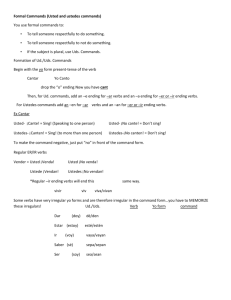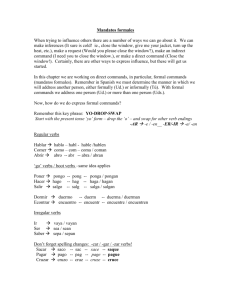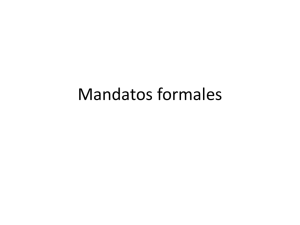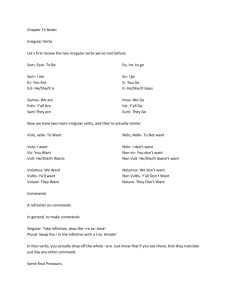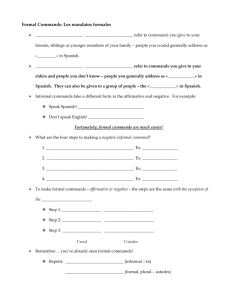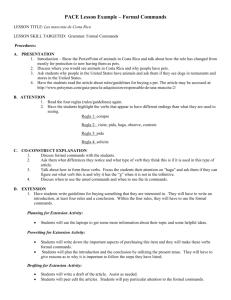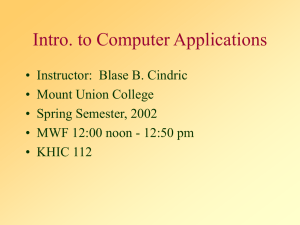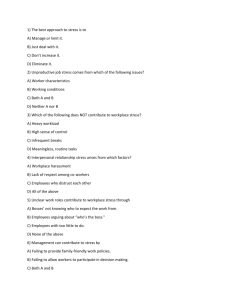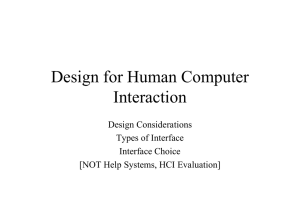MANDATOS FORMALES
advertisement
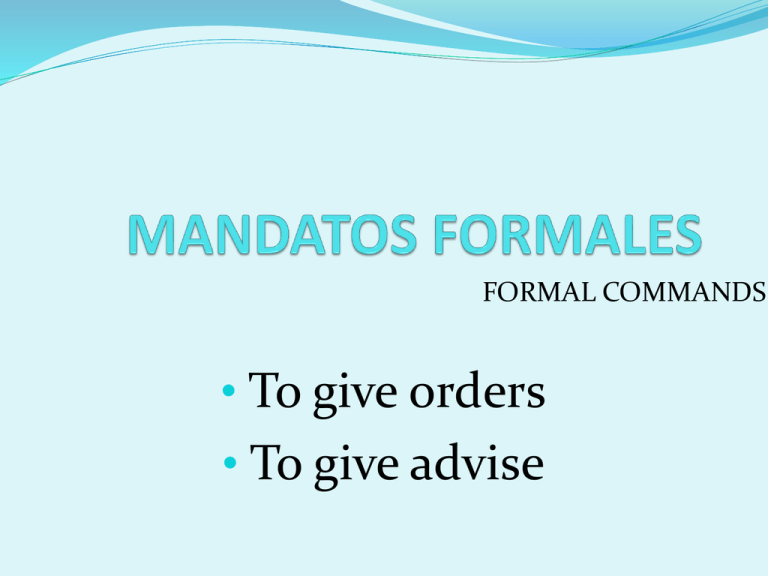
FORMAL COMMANDS • To give orders • To give advise FORMAL COMMANDS Usted (you formal) Ustedes (you all in Latin America; you all formal in Spain). The usted and ustedes commands, (like the negative tú commands), are formed by dropping the final -o of the yo form of the present tense. For -ar verbs, add -e or -en. Hablo Hablar Habl Habl e en Hable Hablen For -er and -ir verbs, add -a or an. Escribo Escribir Escrib Escrib a an Escriba Escriban Verbs with IRREGULAR PRESENT TENSE “YO” FORMS will have irregular command forms. -STEM CHANGES will occur as they do in the 1st person present form of the verb -VERBS ENDING IN –CAR, -GAR & -ZAR will have special spelling changes. -There are some additional IRREGULAR VERBS in formal commands. Atención Just as you learned in familiar commands, pronouns (direct and indirect object as well as reflexive) will proceed negative commands and attach to the end of affirmative commands. *Remember to add an accent mark to an affirmative command if you attach a pronoun in order to preserve the original stress (on the second to last syllable of the command without the pronoun)
